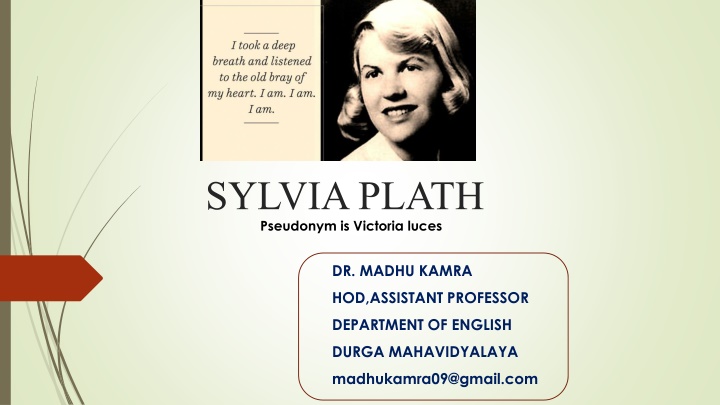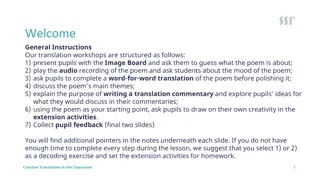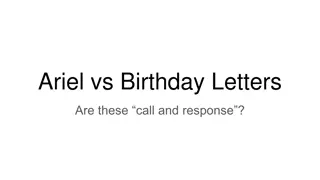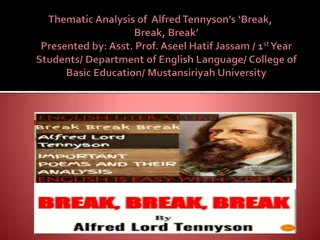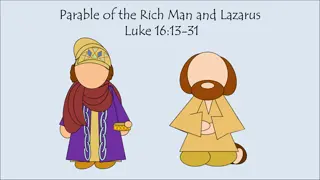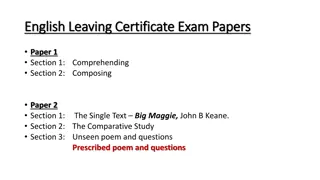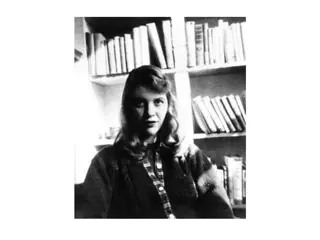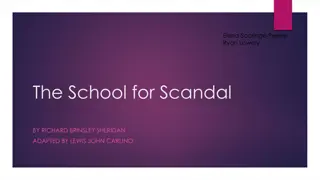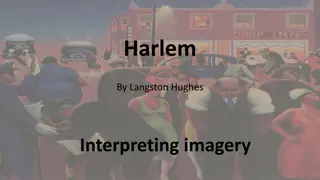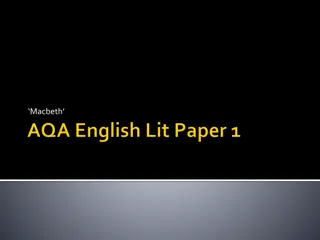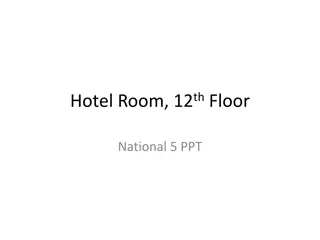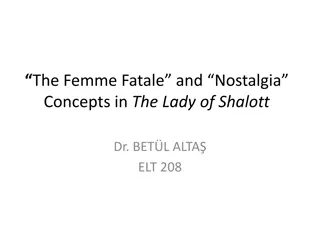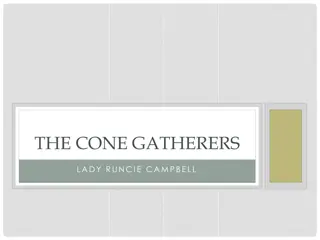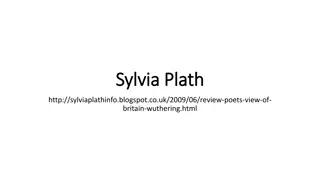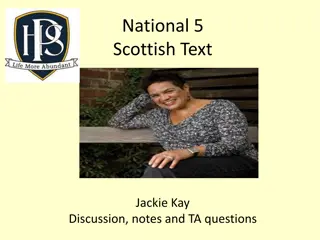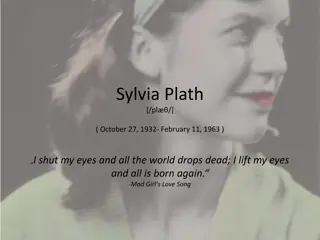Analysis of Sylvia Plath's Poem "Lady Lazarus" and Its Themes
Victoria Luces Sylvia Plath, a well-known American poet, is best known for her novel "The Bell Jar" and poetry collections like "The Colossus" and "Ariel". She explores themes of vulnerability, death, and despair in her poetry, often creating a mood of negative emotions and hopelessness. "Lady Lazarus", one of her notable works, delves into the themes of life versus death, mental illness, and the inner wasteland of the self.
Download Presentation

Please find below an Image/Link to download the presentation.
The content on the website is provided AS IS for your information and personal use only. It may not be sold, licensed, or shared on other websites without obtaining consent from the author.If you encounter any issues during the download, it is possible that the publisher has removed the file from their server.
You are allowed to download the files provided on this website for personal or commercial use, subject to the condition that they are used lawfully. All files are the property of their respective owners.
The content on the website is provided AS IS for your information and personal use only. It may not be sold, licensed, or shared on other websites without obtaining consent from the author.
E N D
Presentation Transcript
Pseudonym is Victoria luces SYLVIA PLATH DR. MADHU KAMRA HOD,ASSISTANT PROFESSOR DEPARTMENT OF ENGLISH DURGA MAHAVIDYALAYA madhukamra09@gmail.com
1.ABOUT THE POET - well known American poet - Best known for her novel The Bell Jar - Poetry collections are the colossus and Ariel - Married to Ted Hughes and mother of two-Freida and Nicholas
2.FEATURES OF PLATHS POETRY In Plath s poetry 1. everything is a symptom of the same Holocaust death is everywhere and the possibilities of dying making it into a perfected art work endless infinite 2. Plaths speaking voices always remains individual 3. Annete Levers writes The Art of Sylvia Plath : Her theme of vulnerability creates an impression of an overall threat 4. The mood in her poetry is always negative and ranges from mere foreboding to hopeless revolt and utter despair
3. Confessional poetry a term covered by M.L Rosenthal in 1959 expressions of - self destruction- conflicted relations - unsettled minds - excessive sensitivity- lacreating sensitivity- psychological vulnerability release of inner hostility and animosity
4. Lady Lazarus written on 23 October, 1962 was recorded for BBC on Oct 30 ,1962 published in the magazine Encounter, Vol 21, No 4 in October 1963 a sister poem to Ariel and Fever 103 the title is Lazarus is taken from the parasle of John in the Bible
5.STRUCTURE a bitter dramatic monologue written in 28 stanzas - symbolising 28 days of the normal female menstrual cycle
6.TITLE OF THE POEM underlines the two binary opposition life versus death also forms a contrast between the biblical figure Jesus/ Lazarus and Plath herself
7. The poem singularly focuses on 1) her maimed self 2) here the self is described as What a trash To annihilate each What a million decade filament 3) battle with mental illness and psychiatric treatment 4) describes inner-life as a wasteland
8. Concept of death a transformed identity death embodies three- part structure of a myth- a) entry into darkness b) ritual death c) resinth a sort of personal catharsis
9. Summary of the Poem The poem begins with an event of the past her suicide attempt She calls herself a walking miracle with an admittance that her survival was an unbelievable happening. Her face is pale and her right foot is as heavy as a paper weight. Her palor is connected to lampshade the Nazi community made out of the skin of Jewish Holocaust deeds. Her face looks like that of a mummy wrapped in Muslin cloth
10.Continuation of Summary Her breath is badly smelly due to the stretch of decay. She reminds her readers of her age 30 and says that she has had nine lives like a cat. Numbering her life as a third she says that she attempts self destruction after a decades and this is third one To the poetess dying is an art and it is easy enough to die in a cell like lunatic bin. She addresses her doctor as her enemy who succeeded twice in bringing her back to life. They behold her as their most prized possession.
11. Continuation of the Summary Her body is like a spectacle to peanut crunching crowd denouncing the macavre interest of the people in others life. She therefore name her death and resurrection theatrical The big strip tease such a spectacle is created when she is forcibly resurrected which she names as theatrical comeback
